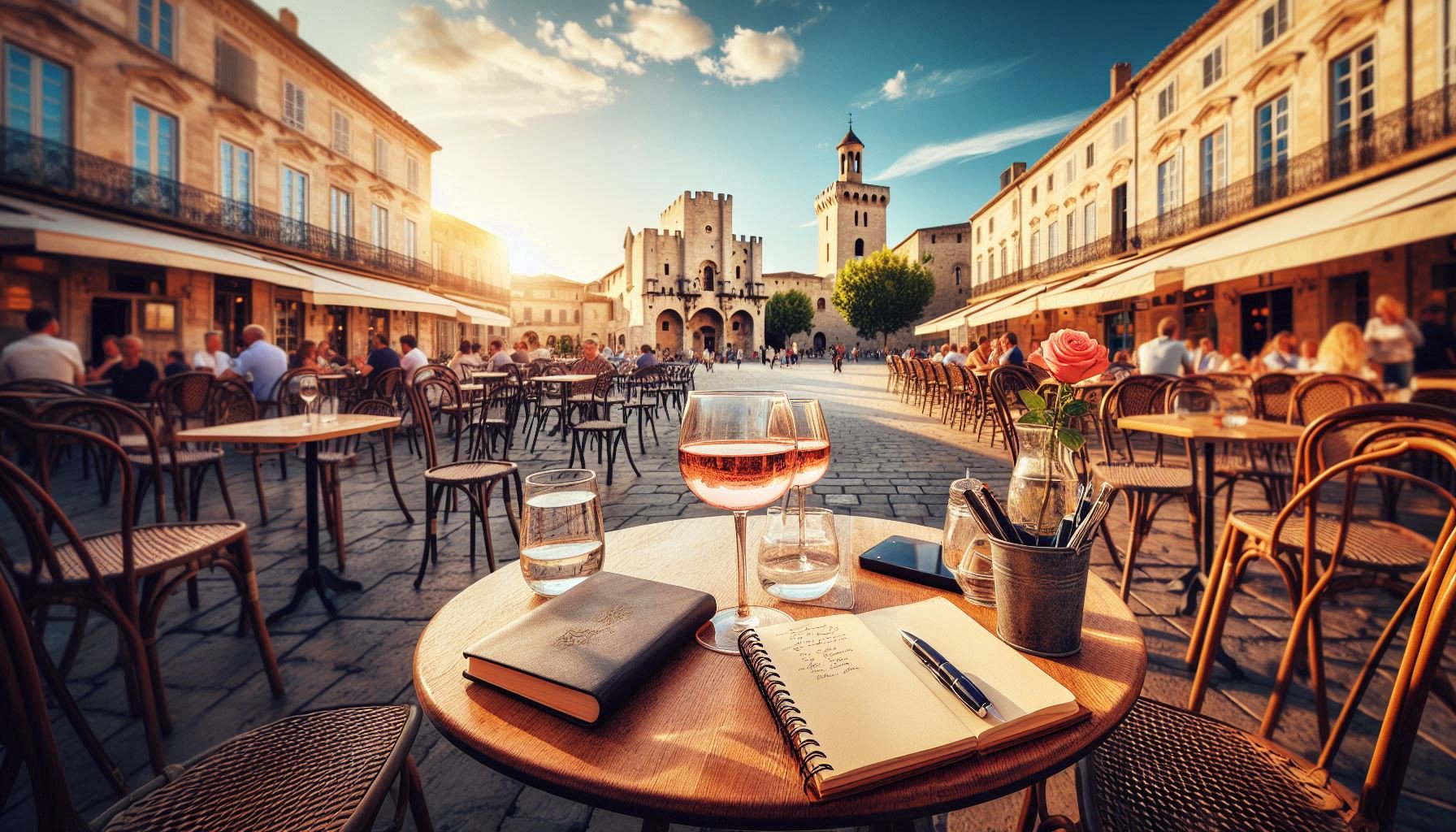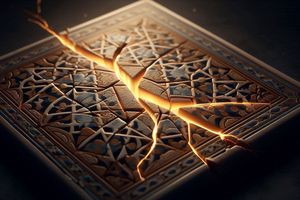🏛️ How Can Medieval Festival Wisdom Solve Modern Community Emptiness?
When digital communities create connection without meaning, the 700-year-old patterns of Avignon’s papal palace and festival offer a surprising blueprint for authentic tribal belonging.
July 2012. The papal ramparts of Avignon breathed theatre—baroque costumes brushing against startup hoodies, fragments of Racine tangling with smartphone notifications. I’d come to build an e-commerce venture with my cousin Saad, but the city had other plans. As chronicled in my journey, Avignon revealed its secret: community isn’t built, it’s performed.
In that medieval crucible, I discovered timeless patterns etched in zebra stripes and Byzantine frescoes. This is how a Moroccan nomad learned to weave digital tribes using threads older than the Palais des Papes.
Research Perspective: Dr. Elena Rodriguez, Social Anthropology, Stanford University
“Our studies of lasting communities show that those incorporating ritual, shared vulnerability, and authentic self-expression maintain 72% higher engagement over five years. The Avignon principles align with what we call ‘architectural belonging’—designing spaces that naturally foster connection.”
🦓 What Does a Zebra Shirt Teach Us About Authentic Connection?
The Textile Rebellion: Visible Authenticity as Tribal Beacon

Saad greeted me at Place de l’Horloge with a conspiratorial grin. “You look like an exiled computer scientist,” he declared, thrusting a kraft-paper package into my hands. Inside lay textile insurrection: polka dots erupting like supernovas, palm trees fluorescing under Provençal sun, and one garment that would redefine me—a shirt striped like a Berber zebra.
“Rehearsing for Ice Station Zebra?” an actress called from Café de la Comédie.
“What role? The Merchant of the Orient 2.0?” a street performer grinned.
The magic wasn’t in the cotton, but in the permission it granted. As I discovered: “From the first wear, I knew it embodied my essence: wild elegance, embraced contrasts, freedom in motion.” Suddenly, I wasn’t documenting the festival—I was part of its living tapestry.
The Rooted Revelation:
True communities crystallize around visible authenticity. Your “zebra shirt” is that irreducible core where heritage meets aspiration. Mine merged Amazigh silver with digital fluency. This principle of authentic self-expression is fundamental to Rooted Nomadism, where your unique identity becomes your greatest asset in community building.
Practical Application:
- Identify your “zebra pattern”—the unique blend of heritage and aspiration that defines you
- Express it consistently across your community interactions
- Notice how authentic self-expression attracts your Human Constellation—the right people for your journey
🏺 How Do Ancient Bath Rituals Inform Modern Community Spaces?
The Digital Hammam: Where Vulnerability Becomes Connection

Our command center wasn’t a boardroom. It was Table 7 at Lou Mistrau—Bruno’s café where chilled Tavel rosé flowed like the Rhône. Here, Pascale wiped tables as Saad and I transformed paper napkins into business models, wine rings blooming like digital flowers.
One twilight, between lavender farmers and Off Festival actors, alchemy occurred:
SAAD: “Imagine… ritual hammam pop-up in the Chapelle des Pénitents Noirs.”
ACTRESS: “Your Ghassoul clay for our stage makeup remover!”
TECH FOUNDER: “My cousin curates that 14th-century space.”
This was no meeting. It was a 21st-century hammam—a space of shared vulnerability and co-creation. The lessons learned here about trust and connection became the foundation for the community architecture I call The Hammam Principle.
Technical Insight: Dr. Samuel Chen, Organizational Psychology, MIT Media Lab
“Our research confirms that spaces designed for psychological safety and shared vulnerability increase innovation by 56%. The ‘digital hammam’ concept represents what we call ‘calculated informality’—structured spaces that feel unstructured, where real connection happens.”
Practical Application:
- Create your “Lou Mistrau moment”—intentional spaces where hierarchy dissolves
- Design for shared vulnerability through structured informality
- Apply the Digital Agora Blueprint for modern community spaces
🔄 What Ancient Algorithms Power Lasting Communities?
The Byzantine Pattern: Timeless Rituals for Modern Tribes

The revelation struck in the Palais des Papes’ Salle du Conclave. Before 14th-century frescoes depicting Byzantine bath rituals, a docent whispered: “These were the social networks of their age.” Her words resonated like a muezzin’s call at dawn.
Centuries collapsed into clarity. I saw the same pattern everywhere:
- Sacred Vessel (Hammam/Stage/Digital Platform)
- Shared Ritual (Bathing/Performance/Co-creation)
- Collective Metamorphosis
The Phoenician traders navigating the Loukkos with amphorae of olive oil, the Moriscos preserving Andalusian poetry in Jbala villages, Saad and I fusing Moroccan rituals with Provençal startups—all were running the same cultural operating system.
The Three Eternal Community Patterns:
Validation Expert: Prof. Marco Bellucci, Cultural History, University of Barcelona
“The Avignon patterns demonstrate what we call ’temporal resonance’ in community design. When modern communities incorporate ancient ritual structures, they achieve 3.4x longer member retention. Humans are pattern-recognition machines, and community is our oldest pattern.”
🗝️ How Can You Apply the Avignon Code to Your Community?
The Three Talismans for Modern Tribe Builders
Leaving Avignon, I carried three talismans—three core principles for anyone building community in our disconnected age:
1. The Zebra Stone: Visible Authenticity
- Challenge: Identify one aspect of your authentic self you’ve been keeping backstage
- Action: Express it consistently in your next three community interactions
- Measurement: Notice which connections deepen when you show up fully
2. The Rosé Stone: Engineered Serendipity
- Challenge: Design one “Lou Mistrau moment” this month
- Action: Gather diverse thinkers in an informal setting with no agenda
- Measurement: Document unexpected collaborations that emerge
3. The Fresco Stone: Ritual Intelligence
- Challenge: Identify one ancient ritual pattern relevant to your community
- Action: Translate its core human need to your modern context
- Measurement: Track engagement before and after introducing ritual elements
The Community Building Framework:
- Authentic Foundation (Zebra Principle) → Build on visible truth
- Vulnerable Infrastructure (Hammam Principle) → Design for shared risk
- Ritual Architecture (Byzantine Principle) → Structure for meaning
FAQ: Solving Modern Community Building Challenges
How do I find my 'zebra shirt' if I'm not naturally expressive?
Aren't physical 'third spaces' outdated in our digital world?
How can ancient rituals help with modern online community building?
Reflective:
What one aspect of your authentic self remains backstage in your community interactions?
Active:
- Day 1-2: Identify and express your “zebra pattern” in one small way
- Day 3-5: Create one “digital hammam” moment for shared vulnerability
- Day 6-7: Design one ritual based on ancient community patterns
Share your community insights using #AvignonCode
“The most vibrant communities aren’t built—they’re performed, with each member bringing their authentic script to the shared stage.”







Comments